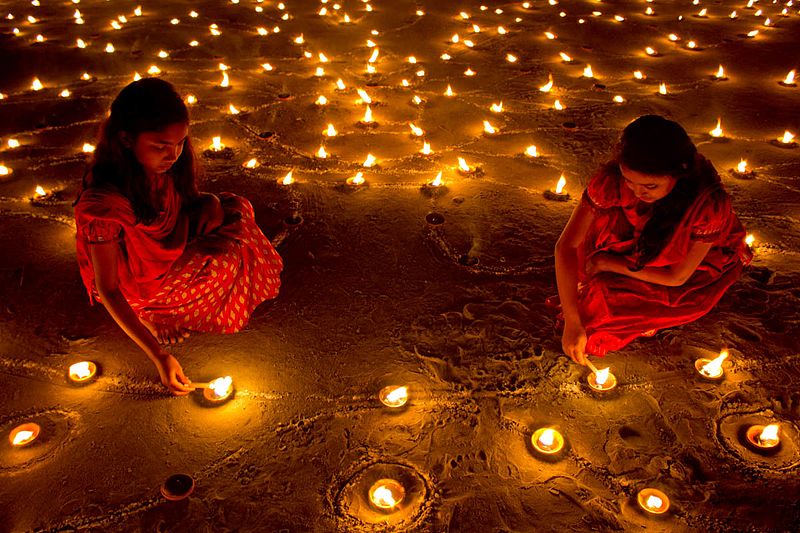From firecrackers to fairy lights, the concept of the holiday of Deepavali has spread across the world. From a pan-Indian festival to a global event, the holiday highlights celebrating the wealth and happiness of our lives.
Deepavali (or Diwali) is one of the greatest and most wonderful festivals traditionally celebrated in India with much fanfare and excitement.
Deepavali literally means ‘a row of lights’. It is a five-day celebration, wherein friends and families get together, light 'Diyas' or earthen lamps in their houses, feast on sweet delicacies, exchange gifts, play games and set off firecrackers.
The festival is celebrated on 'Amavasya' or no moon night and heralds the dawn of a New Year according to the Hindu calendar. It is a harbinger of new beginnings as it is believed that Goddess Lakshmi pays a visit to the houses of devotees in the middle of the dark night, and blesses them with wealth and happiness.
On a philosophical tone, it is also a time for introspection, to contemplate and dispel our own darkness and personal demons.
History of Deepavali
The history of Deepavali can be traced back to ancient India. There are various legends about the origin of this festival. Some believe it to be the celebration of the marriage of Lakshmi, the goddess of wealth, with Lord Vishnu. Others believe it to be the birthday of Lakshmi. The most widespread belief is that Deepavali celebrates the return of Lord Rama along with Goddess Sita and Lakshman from his 14-year long exile to the kingdom of Ayodhya. To display the joy of the return of their king, the people of Ayodhya illuminated the entire kingdom with earthen diyas, which gave birth to the festival of lights.
Five-day celebration
Deepavali is an elaborate five-day festival in India. The first day, Dhanteras, marks the start of Deepavali. It's dedicated to celebrating wealth. People traditionally buy gold and new kitchen utensils on this day. Homes are cleaned and readied to welcome Goddess Lakshmi, the goddess of prosperity, inside. People also get together to play cards and gamble.
The second day is known as Naraka Chaturdasi in south India or Choti Diwali (Little Diwali) in north India. Rangoli (Hindu folk art) is created in doorways and courtyards of homes, and people start bursting crackers. Lord Krishna and Goddess Kali are believed to have destroyed the demon Narakasura and freed 16,000 captive princesses on this day.
The main day of Deepavali is the third day, when lots of small clay lamps (called diyas) and candles are lit and placed in houses. Fireworks are also let off everywhere, giving Deepavali its name of “Festival of Lights”. Families gather together and perform the Lakshmi Puja, and give each other gifts and sweets.
Kali Puja is usually also celebrated on this day in West Bengal, Odisha and Assam. Goddess Kali, the fearsome Dark Mother, is worshiped for her ability to destroy the ego and illusions that go with it.
On the fourth day, merchants open fresh accounts for the new year, and offer prayers. Govardhan Puja is celebrated in north India, to commemorate Lord Krishna's defeat of Indra, the rain god. In Maharashtra, Karnataka and Tamil Nadu, the victory of Lord Vishnu over demon king Bali is celebrated as Bali Pratipada or Bali Padyami.
The fifth and last day, known as Bhai Duj, is dedicated to celebrating sisters. Brothers and sisters get together and share food to honour the bond between them.
Deepavali of Varanasi
Though Deepavali is celebrated in different parts of the country, there is a certain uniqueness in the celebrations at Varanasi. A special Ganga Aarti takes place in the evening. The river is lit up with thousands of diyas floating over its surface. The environment is filled with the chants of the priests, singing prayers for Goddess Ganga and Lakshmi. The fireworks rarely stop and the Ghats reflect the beauty of a surreal world. It is a sight to behold, and one of the best Deepavali experiences in the country.






